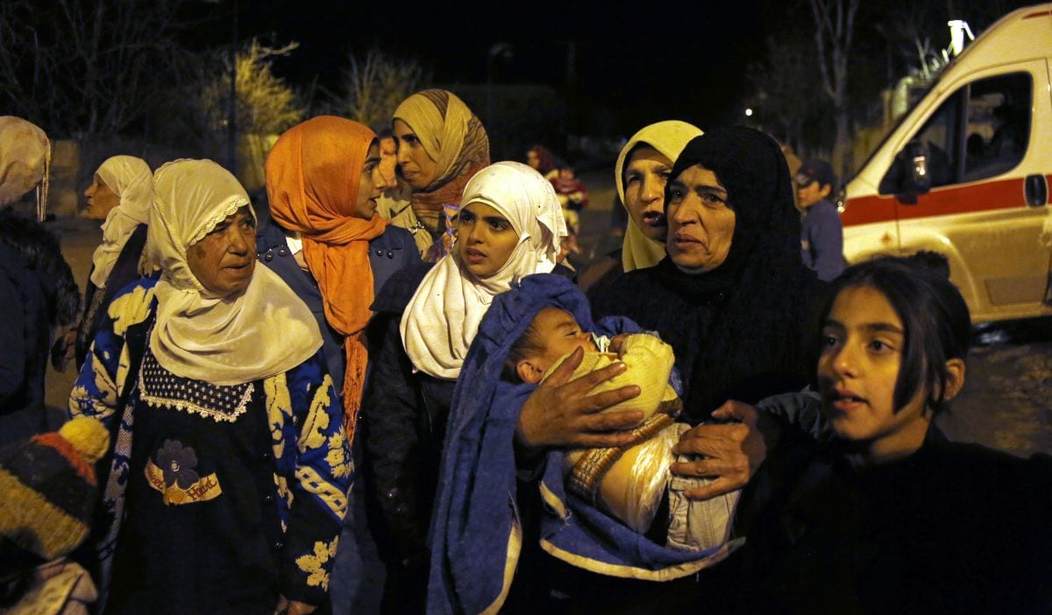This is pretty brutal even for Islamic State.
The Syrian Observatory for Human Rights, a usually reliable observer of that confusing civil war, reports that up to 300 civilians and rebels have been killed and 40o kidnapped by Islamic State forces in the northern Syrian town of Deir al-Zor.
Up to 400 civilians were kidnapped in an Islamic State attack on government-held neighborhoods in the city and taken to the countryside, according to the Syrian Observatory for Human Rights (SOHR), a United Kingdom-based monitoring group.
“There is genuine fear for their lives, there is a fear that the group might execute them as it has done before in other areas,” group founder Rami Abdul Rahman told Reuters. SOHR sources reported that victims of the kidnapping, an event that could not be independently verified, included families of pro-government forces.
On Saturday, SOHR reported that 135 had been killed in the attacks on Deir al-Zor, including 85 civilians as well as pro-government and rebel forces. SANA, the Syrian state news agency, reported a “horrific massacre” of 300 civilians, but did not report a kidnapping. Both government and independent sources reported execution-style killings.
f confirmed, the deaths would be one of IS’s largest mass killings in Syria, though not the largest. In June 2014, the group captured and massacred more than 1,500 Shiite fighters and, less than two months later, killed 900 members of the Sunni Shaitat tribe after they stage a failed uprising against the Islamic State.
ISIS has sought control of Deir al-Zor as a link between its so-called caliphate’s capital in Raqqa, Syria, and territory in Iraq. The Islamist militant group said it had used suicide bombs to attack government forces in Al-Baghaliyeh, a northern suburb, although local sources later said the attack had been repelled, according to Agence France-Presse.
Civilians in government-held areas of the city, many of whom have been displaced from their homes, have been under siege by ISIS since last March, highlighting the threat that forces on both sides of the Syrian conflict are using hunger as a weapon of war.
The humanitarian tipping point has finally been reached. It isn’t a question of there not being enough food. As in Biafra in the ’70s, Ethiopia in the ’80s, and Somalia in the ’90s, conflict breeds starvation. The culprit is usually the national government that can engineer famine because it controls the transportation nexus. In Somalia and Syria, factions have choked off access to besieged cities in order to force surrender. It may take a little while longer than a frontal assault, but the result is the same.
Further south, the tactic has had appalling results:
Graphic images of hunger in the southwestern town of 40,000 prompted an urgent United Nations deal to allow Red Cross convoys to deliver food and aid last week. Activists have reported that more than 40 people have died during a half-year siege by government forces and allied militias to retake Madaya, which is less than an hour from Damascus, Syria’s capital.
UN Secretary-General Ban Ki-moon, who has called the starvation a “war crime,” told reporters that “U.N. teams have witnessed scenes that haunt the soul” after entering Madaya.
As part of the UN-brokered deal to allow aid, food deliveries were made simultaneously to in al-Fouaa and Kefraya, which have been under a rebel blockade.
Between ISIS and Assad, Syria is becoming a hollowed-out shell of a nation that will be decades recovering — if it is able to recover at all.










Join the conversation as a VIP Member